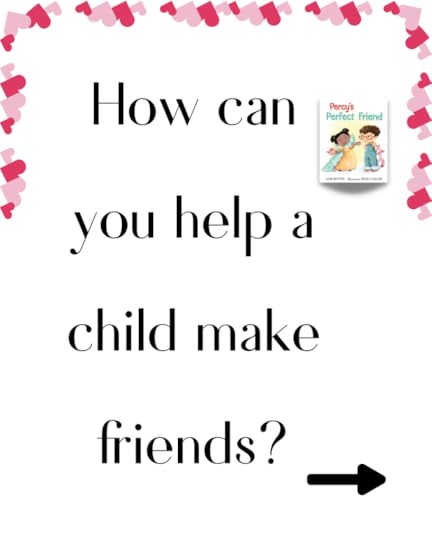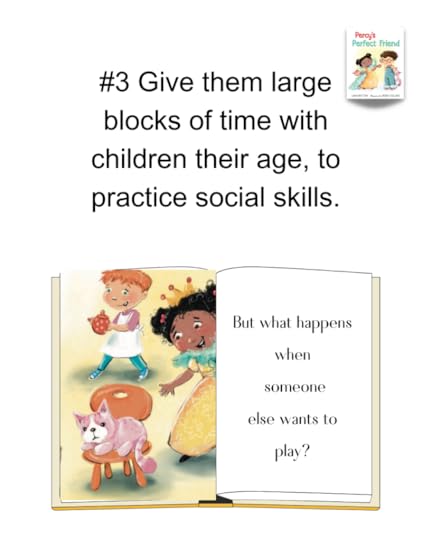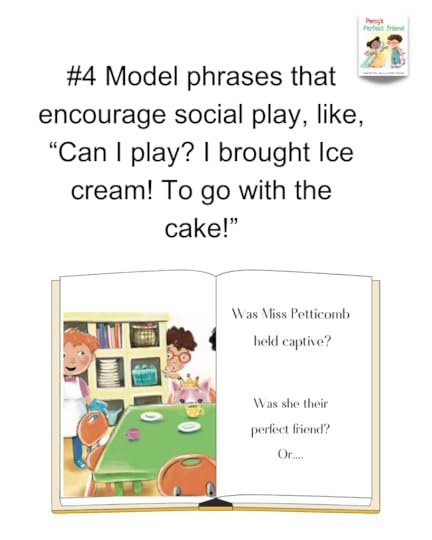Lana Button's Blog
June 19, 2025
SAVE THE DATE!

TOP 3 REASONS I AM EXCITED FOR THIS LAUNCH
I’m so proud of the book! I can’t wait to share ONE CAN with children in classrooms, in libraries and at home! Eric Walters and I wrote this story (Yes! THE Eric Walters!!) as a way to start age-appropriate conversations with young children about food insecurity. It has been a dream project from start to finish working with Eric, with the awesome team at Groundwood Books and with the incredible illustrator Isabelle Malenfant (creator of Morris Micklewhite and the Tangerine Dress). It’s an opportunity to connect with community and give back! Children learn by example and September 7th will be a great example of community giving, as we collect food for Feed Halton. We’ll also gain insight into how we can access community resources, including Halton Food For Thought and Elemenoe Speech and ABA.It’s a chance to celebrate! We are celebrating books for kids! We are celebrating community! And frankly, after the health challenges that were faced this year, Different Drummer’s Ian Elliot and I are ready to party and celebrate life! There’s gonna be face painting with Beebop the Clown! There’s gonna be singing with the awesome Sweet and Salty! And there’s gonna be story time (and a book signing!) with your’s truly!I hope to see you on Sunday, September 7th!
June 5, 2025
Lana Button Books
Here’s a handy list of how my books might help in the classroom when discussing social-emotional learning.


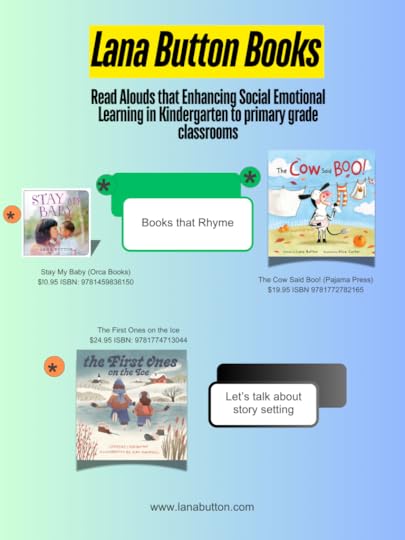
I hope you’ll consider these for read alouds. I’ve got teaching guidelines for many of these books on my website http://www.lanabutton.com
And I visit schools across Canada to talk about social emotional learning and how to write stories. Contact lanabutton3@gmail.com for more information.
May 28, 2025
Author Presentations 2025/26

I’ve got my calendar out and I’m excited to book presentations for the upcoming school year! I look forward to first-time visits and to revisiting schools with my new books! Please contact me for more information on how we can book an author visit for your school!
May 21, 2025
MY CANSCAIP PRESIDENT FAREWELL
CANSCAIP President’s Report by Lana Button
May 14, 2025
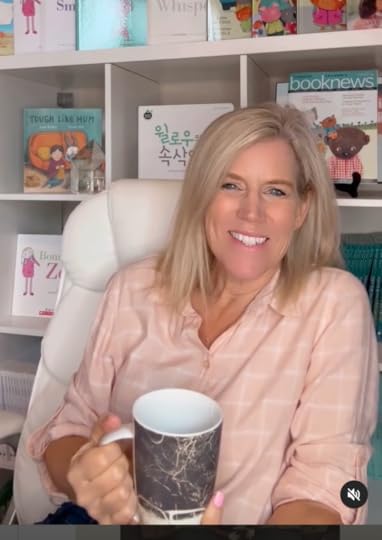 with gratitude I gave my final CANSCAIP President’s Report, and I’d love to share it with you!
with gratitude I gave my final CANSCAIP President’s Report, and I’d love to share it with you!I am pleased to deliver the CANSCAIP President’s Report for 2025. The Canadian Society of Children’s Authors, Illustrators and Performers was formed in 1977 by a group of creators wanting to provide a positive space for those who create stories for children- to support, to give advice, to share experiences and recommendations on the business end, and to cheer each other on. And legendary author Jean Little was quoted as saying, “This will never work.” But here we are in 2025 with the same mandate. We have a healthy, active membership that spans the country. CANSCAIP is recognized and respected by the publishing industry who see us as professionals serious about our craft.
As I report on this year, I would invite you to consider where you are in your journey as a creator and as a CANSCAIP member. Because a society that continues to support their members for close to 50 years carries on because of its members and its mandate. We carry on by sharing what CANSCAIP is and inviting others to join us. I first heard about CANSCAIP in a writing class I took in 2003, and shortly after that, I joined as a friend member. Tonight, I invited 3 people here to our meeting as a way of introducing them to CANSCAIP. Two writers are traditionally published, and one is a self-published author. I had the same message for all three of them. Are you passionate about creating stories for kids and teens? Would you benefit from support, encouragement and professional development? And would you be interested in being in the same room with creators eager with new ideas and new energy, along with creators who are the best in Canada? You live in New Brunswick, Quebec, or Brampton? Great news, our member meetings are online. Haven’t convinced you yet? Fine, editor Anne Shone is speaking tonight! Hah! That’s a mic drop for sure.
So, sitting where you are on your journey, you may find yourself, as I started out, a friend member who leaned heavily into the newsletter and once a year Packaging Your Imagination Conference. For years, that is what I could manage.
Or maybe at this point in your journey, you attend our meetings regularly. After several years, I could manage the monthly trips to Toronto, where the meetings were in-person, and I believe that the inspiration and guidance I received is what got me published. Opportunities to cheer on other creators made the disappointments easier to take. It fed my need for creative conversation and social interaction with people who shared my goals.
I can say that when you have an opportunity to be in a room with CANSCAIP creators whether it be at CCBC Awards, the lawn at the Forest of Reading Event, or the halls at PYI, and you compare their resume, you will find Canada’s greats may have, along with a list of publications, a CANSCAIP past president experience. With their list of awards, they may also boast to have been CANSCAIP’s past treasurer or past speaker coordinator. We are a society of members who take their turn in leadership. And we are a society of members who stick around to share the knowledge we’ve learned along the way. Because we know that’s what fuels creativity.
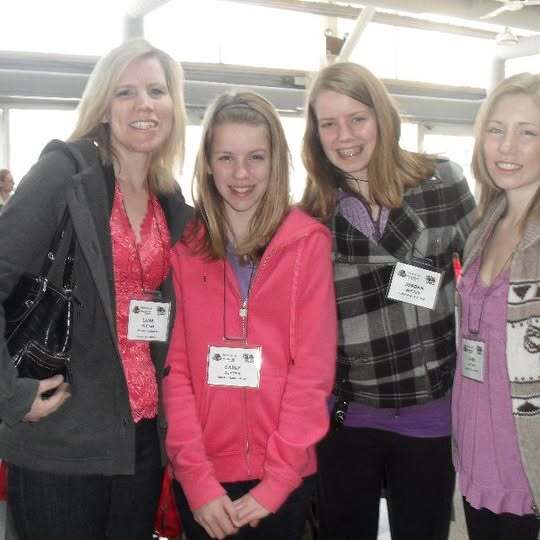 At the 2011 Forest of Reading Celebration with my three daughters and my first published book, Willow’s Whispers
At the 2011 Forest of Reading Celebration with my three daughters and my first published book, Willow’s WhispersWithin my CANSCAIP journey, I have made incredible friendships with creators, and we have cheered each other on as we were first published, and then published again. I have made friends with Canadian greats, whom I have considered idols. I’ve used Barbara Reid’s bathroom. I’m friends with Sharon Jennings. And after years of awkward interactions, I can actually say hi to Kathy Stinson, as a friend (without my voice doing that weird squeaky thing). And maybe I’ve gotten to a point, 16 books in, where I can stick around and be an inspiration to someone.
So, maybe you are at a point in your journey where you can give some time to a CANSCAIP committee, where you could commit to a 2-year tenure on the board. You might show up for an online social and throw your two cents in. That’s what holds CANSCAIP together, and it is a well-oiled machine. This year, we said a huge thank you to Heather Camlot, who was our longtime PYI speaker coordinator. We welcome Corina Zechel into the role, and to Haley Spence as PYI Communications. I have to say a huge thank you to Jillian Dobson, who is more than the one-to-one coordinator for PYI. She not only somehow creates a seamless one-on-one schedule, but she also reminds us at each PYI meeting what Packaging is all about.
We have Janet Tufts newly aboard with some fantastic ideas as CANSCAIP membership rep. Diane Koebel-Pede has really brought some excitement to CANSCAIP with the wonderful member benefit of online writing retreats. Caroline Bennett has created online social opportunities, great Ontario in-person social events, and has established PYI as a weekend event, with awesome social opportunities.
I want to take this opportunity to thank our CANSCAIP News editors, Barbara Greenwood, Monique Polak, Elizabeth McLeod and Rob Morphy. Thank you to Jean E Pendziwol, and Joanne Levy for continuing to streamline the Writing for Children competition and make it a huge success. Thank you, Loretta Garbutt. We come to CANSCAIP meetings ready to be inspired and confident that meetings will run smoothly, and that is thanks to a lot of behind-the-scenes work by Loretta. Thank you for your dedication to the social media committee, Jean Mills. And thank you to Caroline Fernandes and Ellie Arscott for keeping up the design and posting on social platforms. Thank you to our planning committees. Thank you, Marsha Scrypuch for engaging professional conversation on our list serve. Thank you, Sylvia McNicol, for being our Access Copyright Liaison. And a huge thank you to members currently sitting on our board.
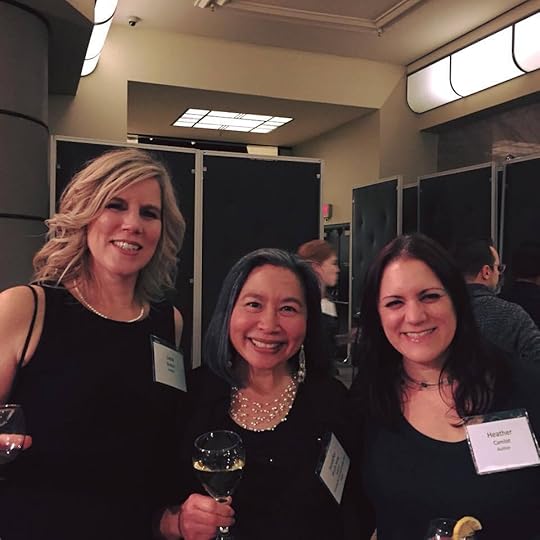 When we were newly published!
When we were newly published!Canadian Children’s Book Awards with authors and CANSCAIP past meeting committee member, Jennifer Mook Sang and past speaker coordinator, Heather Camlot
I got more involved with CANSCAIP as the IBBY Rep, and a volunteer reader for the writing competition. I then became vice president under Sharon Jennings and president of CANSCAIP, with Kathy Stinson as Vice President. It has been an incredible honour. I can say that I’ve always held CANSCAIP in the highest esteem. But, being on the inside, you see how things are really run. It’s like stepping into a school staff room, going into the kitchen area of a restaurant, or backstage of a play- sometimes what’s presented as neat and tidy to the public is not completely legit. But I can tell you, after spending these years on the board, I am even more proud to say that I am a CANSCAIP member. We are a society run by volunteers, and one very hardworking administrative director, Helena Aalto- thank you! And we have our members’ best interests at heart.
I looked back at my 2024 President’s Report with my plans to focus on increasing membership and optimism for my second year. But as life throws curveballs, halfway through this year, I was diagnosed with breast cancer. That will put a full stop to a lot of plans. What helped me in getting through those difficult months was that this society did not miss a beat. Helena, Kathy, and the board all picked up the ball and carried on. Our members enjoyed meetings and socials, and newsletters.
 Presenting outgoing President Sharon Jennings with a painting by Jennifer Faria
Presenting outgoing President Sharon Jennings with a painting by Jennifer FariaAnd what helped me, in getting through those difficult months, were those people that I met before we were published, and my idols, who I now call my friends, who sent messages, and flowers, and soup. The heart of CANSCAIP is genuine, and I am so grateful to be part of it.
Thank you for allowing me a turn at being president. I look forward to continuing to be an active member of CANSCAIP as past president and as your number one cheerleader. And, again, I would encourage you to consider what your CANSCAIP journey has been and your role in helping us carry on.
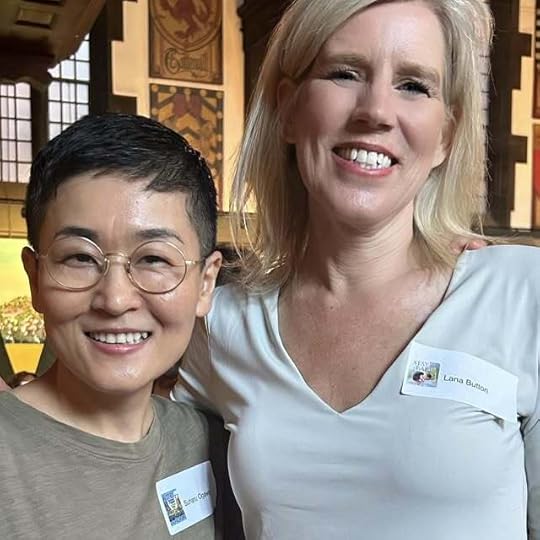 with chapter book partner, CANSCAIP member and past PYI presenter, illustrator Suharu Ogawa
with chapter book partner, CANSCAIP member and past PYI presenter, illustrator Suharu OgawaTo wrap up, I want to remind us all that in CANSCAIP, we are all chasing that next great story. And that journey can be filled with rejection, and like life, it can throw you some curveballs. But CANSCAIP discovered the secret to longevity in children’s publishing almost 50 years ago. You can survive the rejection, the disappointment, not making the list, the years before publication, and the years between publication, when you are part of a society that holds each other up and cheers everyone on.
*find out more about CANSCAIP at www.canscaip.org

October 21, 2024
The Cow Said, Happy Halloween!
I am celebrating Halloween with a not-so-spooky colouring sheet to go along with my not-so-spooky read-aloud, THE COW SAID BOO! (Pajama Press) illustrated by Alice Carter. This stuffy-nosed cow is causing havoc on the farm when her MOO comes out as BOO! (convincing her friends that the farm is haunted!)
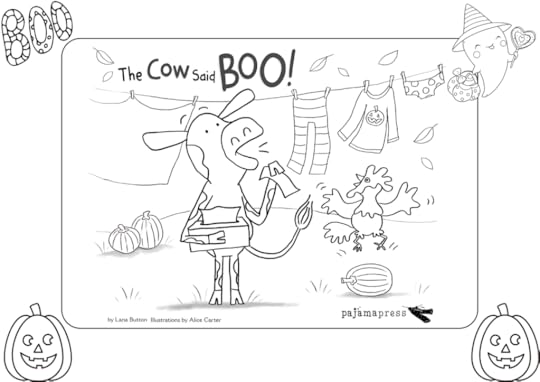
Have fun colouring! Want some classroom activities that go along with this fun Halloween read-aloud as well? Send me an email at lanabutton3@gmail.com and I’ll send it along!
FREE BOOK GIVEAWAY!
And enter my GIVEAWAY!!! Open until Oct 28, 2024, Follow my Instagram @lanabuttonauthor and like the colouring page post for a chance to win your own copy of THE COW SAID BOO! Winner selected randomly.
You can order THE COW SAID BOO! through Chapters Indigo, Amazon, or your favourite bookstore!
“Rhyming text and a repeated refrain swoop kids into the silly antics. The kindness that the cow receives from her pals and how she pays it forward is the real treat.” —Parents Magazine

October 16, 2024
See You Later, School Gate Anxiety!
When Your Child Doesn’t Want to Go to School.
We’ve had almost two months of school drop-off, and most of the kids at your child’s school bound through the gate each morning. But not your child. I am an early childhood educator and the author of 14 books that focus on social-emotional development and if you are struggling to support your child in going to school I have some thoughts on separation anxiety at the school gate, I have some tips, and I have a book that might help.
When it comes to the severity of school-based separation anxiety, school reluctance is when a child doesn’t want to go to school but gets through the gate. Most of the tears and anxious behaviours are exhibited at home the night before and the morning of, on the way to school, and at the entrance to the school.
There is nothing fun about school reluctance, for the child or the caregivers supporting that child. Addressing school reluctance and supporting a child through a difficult transition into school is very important. My key pieces of advice, when it comes to school reluctance are:
Keep conversations about school positive when within earshot of your child. (Do not say, “He hates going to school. School drop-off is a nightmare,” and then expect a different outcome on Monday morning.)Make sure your child is comfortable. If you can, have them use the washroom before leaving for school. They will be less likely to have to deal with a bathroom issue at a time when they may already be upset. It’s getting cold out. If your child isn’t dressed for the weather, they may have another reason to hate being outside waiting for school to start. Your child is more likely to get distracted and then become engaged with their peers if they feel comfortable.Keep drop-off consistent, calm, and low-key. Try to arrive at the same time each morning- not rushing for the bell, but also not the first ones on the playground. Aim for that sweet spot where your child gets some time to socialize but is not expected to drag out the into-school transition. Keep your goodbye positive, confident and caring (try a SEE YOU LATER, ALLIGATOR! ritual handshake) Once you have said goodbye, keep walking.Get back-up. Ensure that an educator, who is familiar with your child and knows the plan-of-action, is there to greet your child at the gate. Schedule a phone or in-person meeting with your child’s educator so that a drop-off and pick-up transition plan is in place, and ensure that the educator is prepared to help your child through the gate each morning and comfort them while they are upset. I would also suggest that you work with your child’s teacher to provide your child with a visual schedule for the day. Small pictures that represent transitions that can include the start of school, snack, lunch, afternoon recess and dismissal with an indicator for the child to show where they are in the day’s schedule can provide your child with comfort in knowing there is always an end to each school day. A journal or email train can also be a spot for you to fill your child’s educator in on how the transition is going on your end.Keep pick-up routines as consistent at your drop-off routines. Again, keep it calm and positive. Do not draw any attention to difficulties from the morning. Avoid saying “I told you so,” if you find them enjoying themselves at school. It is more effective for your child to experience positive transitions consistently than it is for you to point out the situation and perhaps demean their feelings with comments insinuating, “I told you there was nothing to cry about.”Use written communication. Ask your child’s educator to communicate through email or a journal to avoid having to discuss challenges around your child. Ask for a ‘daily positive chat prompt’ from your child’s educator and bring this up at home when your child is relaxed and calm.Maybe at dinner or before bedtime routine, bring it up and give your child time to share a positive school interaction with you. (ie: “I heard that you read a fun story today about…” “Mrs. S said it looked like you had a lot of fun building a train station with Jack today.”)Avoid school drop-off discussions at bedtime. Keep this routine consistent and comforting.What we are trying to avoid with these strategies is a more severe school-based anxiety often referred to as school avoidance which is when your child has difficulty attending or staying at school due to the emotional stress of being at school.
When your child has inconsistent school attendance they not only miss out on education, they also miss out on classroom experiences (“We went to the gym to watch a presentation.” “We all saw that the pumpkin can float in the water table.”) which creates class bonding and they miss out on social interactions with peers. A child who may enjoy sitting with your child at lunch and playing with them at recess creates bonds with other children when your child is away. When your child returns to school they need to try to reconnect with that child who may now be used to playing with someone else.
If your child stays home from school because of school avoidance anxiety, they will feel an initial ease in anxiety on that day. But returning to school the next day will be twice as hard. I say this as seasoned early childhood educator with over 30 years of experience helping children separate from their parents. And I say this as a parent who felt panic, dread and uncertainty on days when I could not get my child to school. I do not, for a second, think that parents whose children are home because of school avoidance anxiety are taking the easy way out. I know the sick-in-the-pit-of-your-stomach feeling when you wish more than anything that your child was one of what seems like everyone else’s kids heading into school. But I also know that there are some days when you feel that supporting your child at home is what they need today.
There is no avoiding the fact that a child with infrequent attendance at school is challenged with catching up academically, reconnecting with their class, and re-establishing friendships with friends who may have formed connections with other students. But there are things you can do to help your child overcome school avoidance anxiety.
If your child is experiencing school avoidance anxiety, I recommend you work with your child’s educator and request special education support within the school. You can request a meeting with Special Education Resources and request that an individual education plan be put in place so that your child is supported with a school entrance plan and an alternative education plan on days that your child is not able to get to or stay in school.
You may also look for outside school support through a therapist experienced with supporting children overcome school avoidance anxiety. An outside therapist can also provide parents with support and guidance in parenting their child through this challenge. When your child has experienced an extended absence from school a gradual attendance plan may be put in place and should be overseen by special education resources and support from outside therapists.
In an effort to help ease school reluctance anxiety for children, I wrote SEE YOU LATER, ALLIGATOR! (Scholastic) This is a lighthearted story that acknowledge the challenges we feel some mornings in separating from our loved ones.
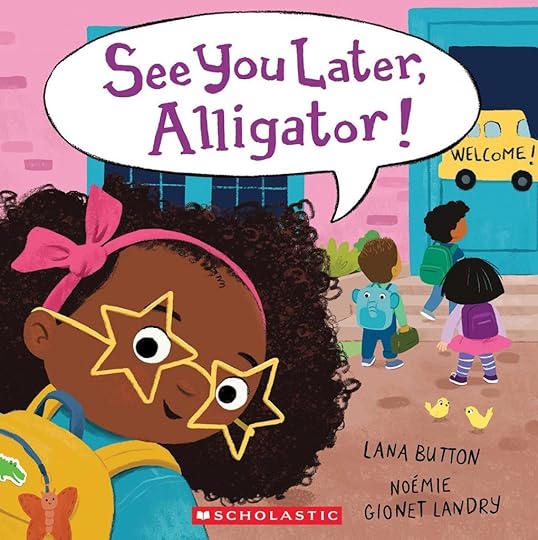 See You Later, Alligator (Scholastic Books) written by Lana Button, Illustrated by Noémie Gionet Landry
See You Later, Alligator (Scholastic Books) written by Lana Button, Illustrated by Noémie Gionet LandryI wanted to remind children that saying positive things to themselves builds resilience. I hope to remind parents that a child’s inner dialogue is often created by what is said to them by their loved ones. And finally, I hoped that the fun handshakes would encourage some rituals that may help.
And every now and then, an author gets some feedback to say that, for one family, the story hit its mark. I recently received this email.
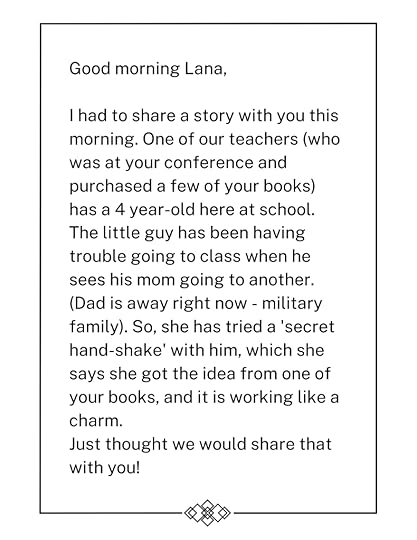
I share this with you as a reminder that sometimes a story is what a child needs to understand their situation and give them a guideline for moving forward. And if they are not immediately bounding off into school after reading SEE YOU LATER, ALLIGATOR! they will get to see that they are not the only ones dealing with this struggle.
I wish you all the best in supporting your child, each and every day.
April 8, 2024
No One Will Play With Me! Taking Turns and Social Skills Success in Kindergarten
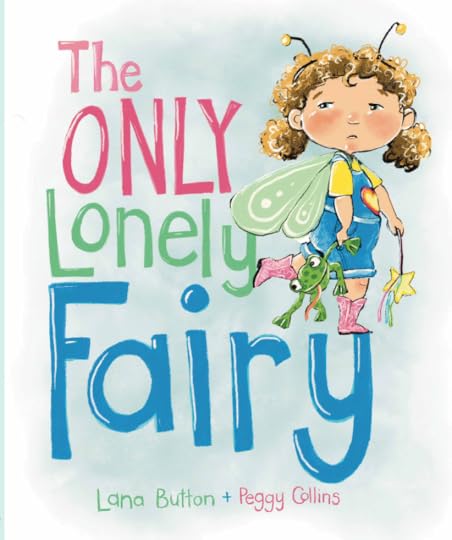
“No one will play with me.” Do you know a child who says this? I think I can help. I’m an early childhood educator who has worked with the developing skills of preschool to primary grade children for more than thirty years, and I’m the author of more than a dozen books that tackle topics on social-emotional learning. I’d love to share three tips to help strengthen your child’s social skills, so that they are more successful with social interaction with their peers and in developing friendships.
PRACTICE TAKING TURNS
Engage in an activity with your child and practice back-and-forth turn-taking with play materials, (I’m talking about those coveted favourite toys- the red shovel, the blue car, the pink marker!) Use some language here to ease any apprehension. “I’d like to use your pink marker while I colour the cloud and then I’ll give it back.” The more experience your child has in successful back and forth turn-taking the more confident they will be when it comes to taking turns with peers.Engage in pretend play and practice taking turns with who gets to pretend to be a certain character. You can also suggest switching to a different game, so that your child has practice taking turns in choosing the game. Encouraging turn-taking while in an activity with you can be a great way for your child to develop skills in communication and compromise, allowing them to eventually carry these skills through to play experiences with their friends. Children who are more able to consider the feelings of others, share and take turns will be more successful when socially engaging with peers and developing friendships. And while you are colouring or driving those cars this is a good time to demonstrate verbally to your child what it feels like if a friend isn’t taking turns. “It’s not fun to keep playing if I can’t ever use the blue car.” or “I really had fun being the big sister that time. Thanks for letting me take a turn!” * Please note that this is a social skill goal that we hope a child has a solid grasp of by the end of kindergarten. (back off on those toddlers!!! They are not yet there developmentally!)Practice with your child to help them advocate for themselves. Help your child get comfortable saying, “I’d like a turn soon.” Or “After we play here can we try my game?”PRACTICE WITH A PEER
Arrange practice time with another child. This could be a play date at your home or a meetup at a park. I’d recommend keeping the play date short and sweet the first time or two.This is the important part- keep close by! If your goal is social skills practice you want to be within earshot if there are conflicts, so that you can help the children maneuver through tricky social situations. This is not a “Go figure it out on your own,” kind of play date. Coach the kids through conflict with tips like, “I think he might be frustrated because he would like a turn now.” and “I bet if you told her that you were going to use the marker until you finished this part and then you’ll give it to her, she would feel happy.” In the same way that you are modelling language when you are doing activities with the child, help coach with language prompts if they are needed.And remember- the goal is to scaffold – which means you are going to pull back with the coaching as soon as your child is manoeuvring this social skill on their own. (Much like the scaffolding on a building is removed as soon as it is no longer needed.)READ BOOKS ON MAKING FRIENDS
Read books where characters develop friendships. When a child reads a story rich in social-emotional literacy, they experience the positive outcome of the story, they gain tips on how to solve social conflict and they gain language they can incorporate into their own social scenarios. It’s why I wrote the book, The Only Lonely Fairy, (Pajama Press) about a dramatic little girl who is convinced that no one will play with her. A child can connect with Leah thinking, “Sometimes I feel like no one wants to play with me.” Children can see the humour in the fact that Allie is right behind Leah trying to let her know that she also likes playing fairies, while Leah dramatically carries on that no one will play with her. As a young audience experiences the positive outcome of friends finding each other, they can gain an understanding that sometimes we need to keep looking when peers have not accepted our request to play. The Only Lonely Fairy gives the child language that they can try on their own, encouraging the use of those magic words, “Do you want to play?”Picture books are an excellent learning tool for kindergarten children. Listed below are specific learning goals from the Ontario, Canada kindergarten curriculum which can be met when reading and discussing a social-emotional story like The Only Lonely Fairy, or Percy’s Perfect Friend, Tayra’s Not Talking, and What if Bunny’s Not a Bully? Check out my website for more information, for activity guides and for more picture books encouraging social emotional learning. www.lanabutton.com
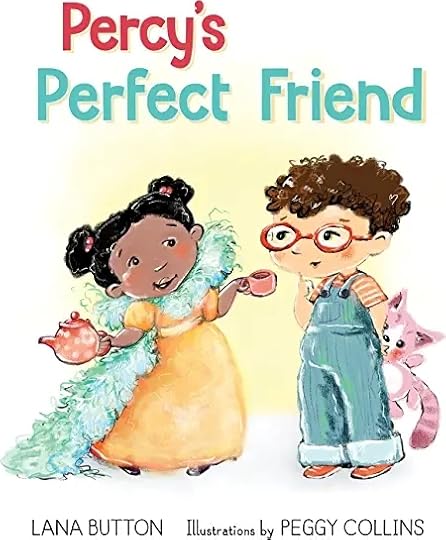

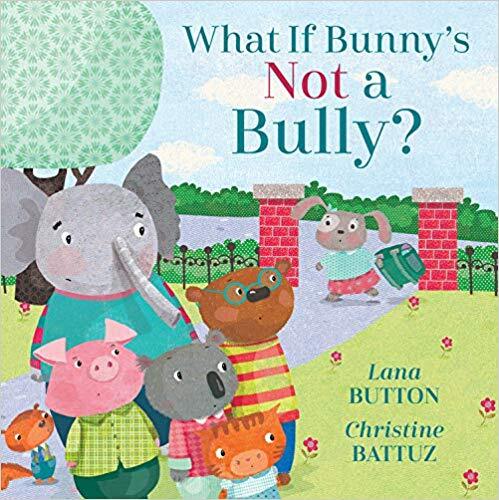
Ontario Kindergarten Curriculum Learning Goals:
Demonstrate an ability to use problem-solving skills in a variety of contexts, including social contextsIdentify and use social skills in play and other contexts Communicate with others in a variety of ways, for a variety of purposes, and in a variety of contextsDemonstrate a sense of identity and a positive self-imageDevelop an appreciation of the multiple perspectives encountered within groups, and of ways in which they themselves Can contribute to groups and to group well-beingRecognize bias in ideas and develop the self-confidence to stand up for themselves and others against prejudice and discrimination.Social skills take practice. Let me know in the comments how your child copes with turn-taking.
March 25, 2024
Looking forward to spring and summer speaking engagements
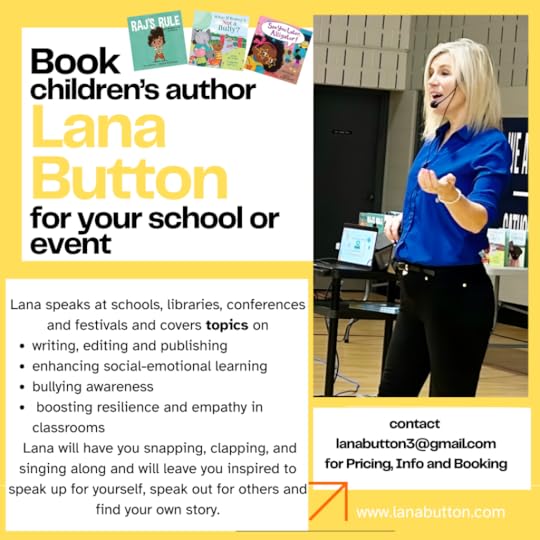
Bring reading and writing inspiration, and a boost of social-emotional learning to your school.
I have presented to thousands of students across Canada and I am booking spring and summer speaking engagements now!
contact for more info lanabutton3@gmail.com
February 21, 2024
The Path to a Positive Pink Shirt Day

Pink Shirt Day is coming up. On Wednesday, February 28, students across Canada will wear pink shirts to elementary school, and pledge to stop bullying. So, who exactly is this bully? As an early childhood educator and a picture book author, I am coming at this conversation focusing on our kindergarten to primary grade pink-shirt-wearing students. So, when it comes to identifying ‘the bully’— I am not a fan of name-calling. Pink Shirt Day is about being kind, standing up for others, and speaking out when we see unkind behaviour. And I would add- that we need to leave space for our peers and ourselves to acknowledge that we’ve made a mistake, that we’re sorry, and we’d like to try again.
Elementary school is not made up of ‘good guys’ and ‘bad guys’ it is made up of children developing (and making mistakes along the way with) their communication, language and social skills.
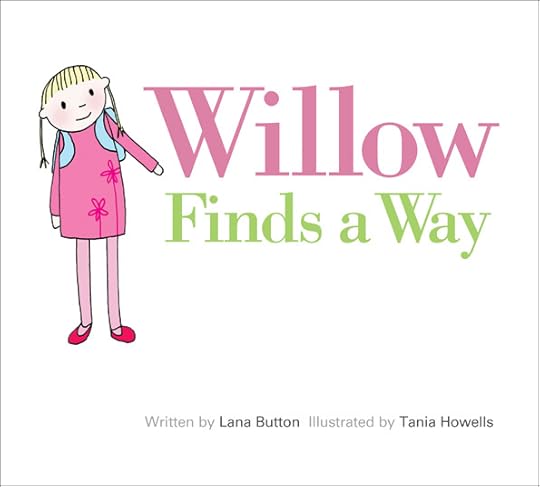 Willow Finds a Way (Kids Can Press) by Lana Button and Tania Howells
Willow Finds a Way (Kids Can Press) by Lana Button and Tania HowellsMy picture book, WILLOW FINDS A WAY (Kids Can Press, illustrated by Tania Howells) was placed on Publisher’s Weekly‘s Anti-Bullying Books List, and the CCBC Pink Shirt Day List. It’s about how the quietest kid in class stands up to someone being unkind. But the story doesn’t end when the class follows Willow’s lead and crosses their names off Kristabelle’s birthday list. It doesn’t end with everyone turning their back on this primary-grade kid. It ends after Willow once again walks away from unkind behaviour, and gives Kristabelle some grace and some space to try again.
I think we can get to the other side of bullying, where every child feels safe, respected and heard, by helping children develop these three skills:
Communication Skills
Bullies are bad. Stand up to them. That’s the Coles Notes message to children. But what can happen here is a misinterpretation and a miscommunication to young children that it is okay to label a peer a ‘bully’ when they are having a conflict. Here are some tips for helping children better communicate with their peers when dealing with unkind behaviour.
Absolutely, we must flex our communication skills to address someone who is treating us, or those around us badly. Teaching kids to use action words as opposed to ‘labeling words’, when communicating with their peers can help. “Don’t call me that,” is a specific, direct action that is more helpful than ‘You’re so mean.’ And it takes practice! Sit in on any marriage counselling session to remind yourself that adults are still working on it.
It’s also very helpful for children to express how that action makes them feel. “That makes me really sad when you do that.” This healthy communication allows a child to acknowledge their feelings, and it helps them develop their ‘feelings vocabulary” (ie: ‘that frustrates me’ ‘that embarrasses me’)
Okay, but what if a child acknowledges that they are the ones who have been unkind? Are they that primary-grade kid who is “doomed to be a bully, with no chance to make it right?” as Kitty puts it in my picture book WHAT IF BUNNY’S NOT A BULLY? (Kids Can Press, illustrated by Christine Battuz)
 What if Bunny’s Not a Bully? (Kids Can Press) by Lana Button and Christine Battuz
What if Bunny’s Not a Bully? (Kids Can Press) by Lana Button and Christine Battuz Let’s add to the phrase, “I’m sorry,” which can often get tossed around like a meaningless magic word. If there’s a breath there first, and an acknowledgment, with some action words, “I made a mistake when I said that… when I did that…etc. I’m sorry.” It is healthy for everyone involved to acknowledge when talking about unkind behaviour, that we all make mistakes along the way.
Social skills practice
Primary-grade students often need guidance when interacting with their peers. I appreciate that it is exhausting and never-ending, but don’t tell kids to stand up to bullying and then shoo them away with “work it out yourselves,” or “I don’t listen to tattling,” when they come to you for help. Children need (and deserve) a calm adult to help them interpret social conflict and find the dialogue to work through social challenges.
Examples of empathy
Cue the picture book! As our students colour in those pink shirt outlines let’s boost experiences with and examples of empathy, by reading books that deal with social conflict and resolution. I implore you to continue the story beyond the ‘stand up and walk away’ message. Arm our children with actions and dialogue through stories where characters have made it to the other side of social conflict. In WHAT IF BUNNY’S NOT A BULLY? everyone has become an expert at walking away from Bunny, even though no one can remember why she’s the bully. But when Kitty starts looking at it from a different angle, questions arise. What if she’s sorry? When do we give her a chance to try again? After the acknowledgement of “I know I’d want another chance if I’d done something wrong.” Bunny is given some grace and some space and apologizes. And there is an acknowledgement that we all make mistakes and deserve a chance to try again. School Library Journal says, “WHAT IF BUNNY’S NOT A BULLY is a great choice for young readers to explore what it means to be a bully and reflect on the power of forgiveness.”
In WILLOW FINDS A WAY, Kristabelle is being mean. She absolutely needs to be called out for it. But when given a chance, she apologizes and tries again. I believe that these stories not only give children a dialogue for standing up for themselves and for others, they also provide acknowledgement that we all make mistakes, and give children space and dialogue to say with meaning, “I’m sorry.”
Experiencing Empathy We develop empathy by experiencing it. A picture book can be a tool for a child
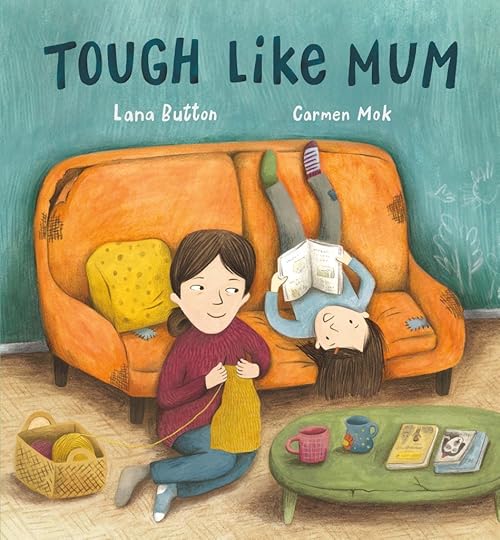 Tough Like Mum (Tundra) By Lana Button and Carmen Mok
Tough Like Mum (Tundra) By Lana Button and Carmen Mokto see another person’s perspective. And they should be cracked open beyond the primary grades. After I read my picture book, TOUGH LIKE MUM (Tundra, illustrated by Carmen Mok) which deals with mental health and socio-economic diversity, I will ask my audience, “Do you think David would have made that joke about Kim eating a Butt Sandwich if he knew that she had to make her own lunch that morning and that was all the food she had?”
After reading an empathy-boosting book I would invite you to continue the conversation by asking:
Who was in the story?Where did it take place?What was the problem?Was it solved?What does it remind you of?Remember- no wrong answers here! Just let your students talk. This can lead to a valuable conversation about empathy and communication- and it can be an excellent way for you to bond with your students- but that’s for another article!
Want an activity prompt? Have our students draw and write about their interpretation of #4 and or #5. You could even do it on a Pink Shirt Day outline!
 https://www.amazon.ca/s?k=Tough+Like+Mum&i=stripbooks&crid=58FZIO2HMX0G&sprefix=tough+like+mum%2Cstripbooks%2C155&ref=nb_sb_noss_1
https://www.amazon.ca/s?k=Tough+Like+Mum&i=stripbooks&crid=58FZIO2HMX0G&sprefix=tough+like+mum%2Cstripbooks%2C155&ref=nb_sb_noss_1
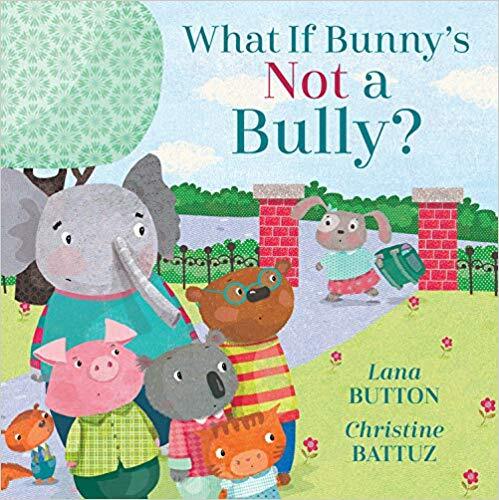 https://www.amazon.ca/s?k=What+if+Bunny%27s+Not+a+Bully%3F&i=stripbooks&crid=35NBVUB35LMN5&sprefix=what+if+bunny%27s+not+a+bully+%2Cstripbooks%2C152&ref=nb_sb_noss
https://www.amazon.ca/s?k=What+if+Bunny%27s+Not+a+Bully%3F&i=stripbooks&crid=35NBVUB35LMN5&sprefix=what+if+bunny%27s+not+a+bully+%2Cstripbooks%2C152&ref=nb_sb_noss
 https://www.amazon.ca/s?k=Willow+Finds+a+Way&i=stripbooks&crid=3CKMUBBGGVLG4&sprefix=willow+finds+a+way%2Cstripbooks%2C143&ref=nb_sb_noss_1
https://www.amazon.ca/s?k=Willow+Finds+a+Way&i=stripbooks&crid=3CKMUBBGGVLG4&sprefix=willow+finds+a+way%2Cstripbooks%2C143&ref=nb_sb_noss_1
 https://pinkshirtdaycanada.ca/official-pink-shirt-day-t-shirts-hoodies/
https://pinkshirtdaycanada.ca/official-pink-shirt-day-t-shirts-hoodies/
February 2, 2024
How can we help a child make friends?
Okay, all you new moms and dads, we know you’ve got a ton on your plate. You do everything for those tiny humans! But you know what’s really hard? When you can’t.
It’s our job to get kids to do things independently. But, from the agony of sitting on your hands while they manoeuvre putting on their own coat, to the heartbreak of seeing them struggle to enter play with others, the hardest part of parenting is when you can’t do everything for them.
I am an early childhood educator who spent years behind the kindergarten curtain and I can tell you that the most popular question parents ask is, “Does he play with anyone?”
I am the mother of three girls, and I can tell you that, when the invitation didn’t come, or I watched my daughter on the sidelines, the desperate reality of, “I can’t fix this,” hits pretty hard.
As much as we might wish we could orchestrate situations, “Okay, you play with her. And have fun doing it,” developing social skills and creating authentic social experiences for your child is not something we can force.
But there are things we can do to help a child develop stronger communication skills and social skills to allow for more successful social interaction. I’ve listed a few here.
I wrote the book PERCY’S PERFECT FRIEND (@pajamapressbooks ) perfectly illustrated by @peggysillustration to support kids in developing these important social skills.
It’s available wherever you buy or borrow books. I hope you’ll check it out. DM me for some great follow-up activities that go along with this read-aloud recommended for preschool to primary-grade children.
#makingfriends #belongingandcontributing #socialemotionallearning #socialemotionaldevelopment #socialemotionalskills #kindergarten #kindergartenteacher #kindergartenclassroom #picturebook
